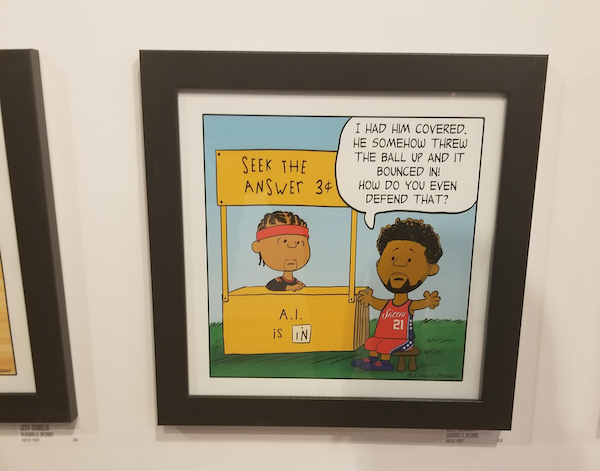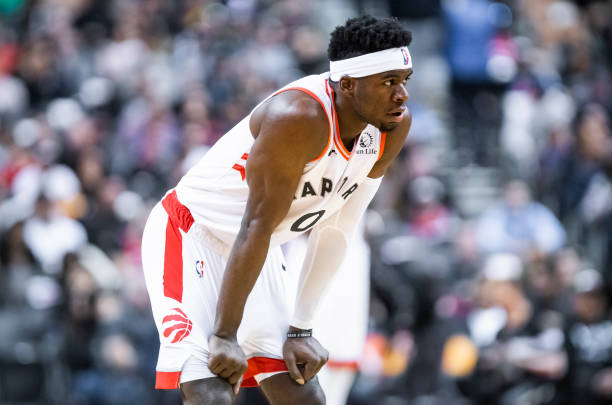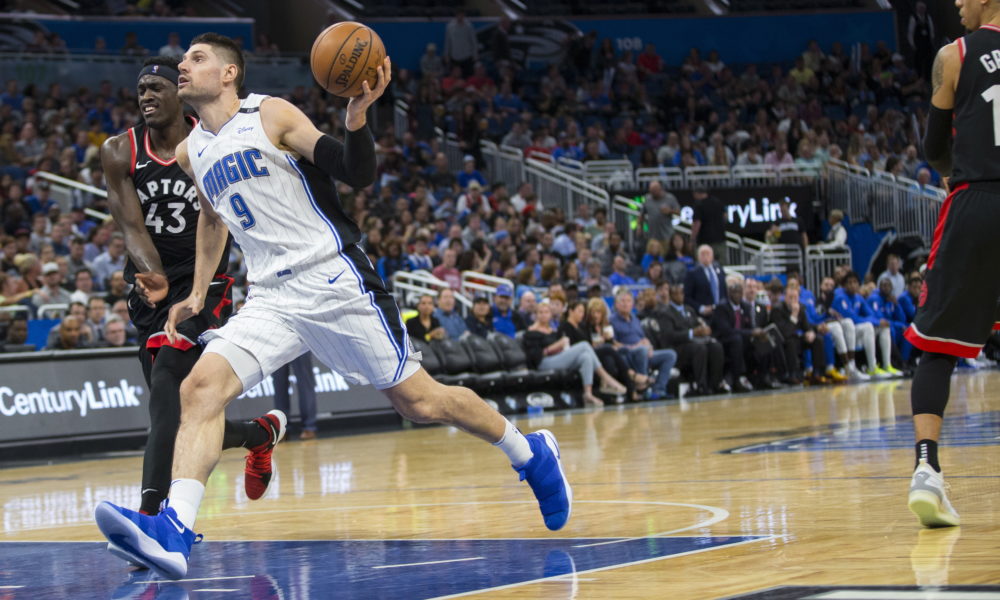Powell needs consistency | Raptors can shoot; learned it from Nurse | Webster is an interesting guy
Within that macro stability is a sometimes maddening micro inconsistency. Powell appears over the course of weeks to be a starting-calibre wing, a sixth-man type scorer, a helpful secondary facilitator, a 3-and-D piece or, too often, a non-rotation player. Sometimes, he shifts between some of those roles within a game, making a terrific play on offence and then neglecting to get back in transition, or thwarting his own excellent drive with a careless mistake. There is an inherent irony in a more veteran-type young player providing relatively stable big-picture performance over five seasons while playing with the game-to-game inconsistency of a rookie.
“We’ve seen some really great play, right? A little bit up and down,” Nick Nurse said before Monday’s game. “I mean, listen, I wish we could pencil him in for about 16 each night, rather than 26 one and zero the next, 21 and four, or whatever. But he’s certainly capable, obviously. … He’s been good. We’re happy with Norm. He can be an impact player for us this year, more impactful.”
Naturally, Powell scored 17 points after Nurse’s comments, granting something close to his coach’s wish. Even within that 17-point night, though, there were ups and downs. There were a few lapses in transition defence and a cold shooting night sprinkled around a strong game attacking the rim and working as a playmaker. (Powell had a career-high six assists.) There are not a lot of faults to find within a 36-point win where Powell was a plus-27, but at least for now, each of those strong, sporadic performances has the effect of also casting a light on the lesser nights.
Consistency is something I sometimes wonder if we do a poor job of picking up on in terms of pattern recognition, and so I wanted to try to put some sort of quantification on Powell’s ups and downs. To do so, I pulled every individual player game through Nov. 18 this season. I then filtered out players who hadn’t made at least five appearances of five minutes or more, as I wanted to look at players with at least a semi-consistent place in their rotations. That cut the sample from 4,203 player games to 3,767 games across 335 players. I used Basketball-Reference’s Game Score to try to capture overall performance in a game, which is imperfect but the best readily available game-by-game catch-all I have access to.
Raptors make time for development in win over Hornets – Yahoo!
On the surface, it’s easy to look at that lineup that stepped onto the court to begin the second quarter and wonder what Nurse was thinking. That there were surely better ways to help the spacing on the floor and give them a better chance offensively. But early second quarter against the Hornets in November is about as low leverage a time to give players an opportunity to grow.
Davis is clearly better playing off the ball at this stage of his career — it gives him less to think about and manage — but to assist the development of his game, there need to be opportunities for him to grow into the role he’s likely best suited for in time.
“I’d like to get him to the point guard position eventually,” Nurse said after the game. “I think he’s a combo guard now, he can play point, obviously, but I think he’s much more comfortable at the two, and I think everybody is, it’s just a much easier … you know, calling plays, running the team, all that stuff, that’s a lot of extra duties when you’re a point guard, and he’s young, so we’re trying to get him out of … just let him think a little more freely and use his talents right now than have him do all that extra stuff yet.”
The modified bench mob wasn’t the only one to have time for development.
Anunoby scored a career-high 24 points, but the moments that were the biggest signs that he’s looking to round out his game were the mid-range jumper off a high screen, and a couple of side-step 3-pointers that showed he can be more than a catch-and-shoot player.
Development, drive make Raptors a top-tier three-point team – Sportsnet.ca
“I always tried to carry on with that,” Nurse says. “I always think that the more you teach something, the better you learn it.”
These days, it’s a prerequisite for young NBA athletes to have a long-range shot in their arsenal. The NBA’s three-point boom is in its final reverberations, as this season all 30 teams are attempting at least 25 threes per game. Five years ago, only 10 clubs shot that often from distance. Three years before that, only one did. Three-pointers are no longer a feature of some teams’ offences — three-pointers are some teams’ offences.
Facilitators shoot threes. One-on-one ball-handlers shoot threes. Seven-footers shoot threes. And the Toronto Raptors aren’t only shooting threes better than anyone — they’re teaching young players to improve their long-range accuracy as well as anyone, too.
“That’s something that we really focus on,” says Raptors guard Fred VanVleet. “Nurse is obviously a big proponent of shooting, studying shooting, and everything that entails. And he implements that to his staff.”
Through 13 games, the Raptors are tied with the Detroit Pistons for the league lead in three-point shooting at 40.5 per cent. Six Raptors — VanVleet, Marc Gasol, Kyle Lowry, Terence Davis, OG Anunoby, and Matt Thomas — are shooting 39.5 per cent or better, putting them in the top-100 of a league in which more than 350 players are averaging 10 minutes or more per game. And among the 229 NBA players who’ve played at least five games and averaged two or more three-point attempts per night, Thomas (56.5 per cent) and Anunoby (53.2 per cent) are first and second in three-point percentage.
It’s still early, of course. These numbers will fluctuate as we get deeper into the season. Before Monday night’s win over the Charlotte Hornets, Nurse estimated that it takes about 25 games for NBA-wide data to normalize. But even if Toronto’s statistics return closer to earth, we’re still talking about one of the better three-point point shooting teams in the league.
Raptors continue to turn their intriguing prospects into good shooters – The Athletic
“You just kind of maybe think there’s not some historical data (of 3-point success) with some guys — there are some guys who’ve really improved,” Nurse said. “I think that all the guys that (have been) here for a while from Norman (Powell) to Fred (VanVleet) to Pascal (Siakam) to OG, those guys are all really improved as shooters and when they vault up to shoot, most of us, I’m pretty confident that they’re going in with all those guys.
“So credit to them for putting the work in. I think our player development people have done an outstanding job.”
The Raptors have an established track record of not bringing in ready-made shooters as rookies. If you forget about Fred VanVleet, who shot at least 38 percent from behind the arc in three of his four college seasons, they really have not brought in a shooter straight out of school for quite a while.
That includes Terence Davis, at least to an extent. He was up to 37.1 percent from deep in his senior season at Ole Miss, but he never made more than a third of his 3-pointers before then. As players get stronger, their shooting often improves, but Davis is now at 46.4 percent from the deeper line with the Raptors.
As is the case with Anunoby, that number will almost surely fall as the season goes on. When he misses, he often misses badly. But he hit four of his five against the Hornets, and is tracking as someone who is a better shooter than initially advertised.
GANTER: These Raptors can shoot the ball and it’s only getting better | Toronto Sun
The thing is, the Raptors have made themselves a good shooting team.
OG Anunoby didn’t arrive in the league the shooter he is today. Anunoby sank 10 of the 13 shots he attempted Monday night, four of seven from distance. The accuracy was probably less surprising than the variety of ways he scored.
Even as a rookie, Anunoby could successfully set up in a corner, wait for the pass and hit a standard three.
But Monday he was draining pull-up threes from 27 feet, laying in a driving a reverse layup, casually dropping in a 24-foot step back, or punishing the rim with a cutting dunk.
The arsenal is full and he uses all of it.
As Fred VanVleet will tell you, none of that comes without hard work and Anunoby, after an up-and-down season a year ago that was interrupted by off-court issues, injuries and finally ended by a burst appendix depriving him of a role in that playoff championship run, put in a hard offseason.
But the foundation for that kind of success is a sound, fundamental stroke and that is where the organization comes in.
The Raptors develop their talent arguably as good as any team this side of the San Antonio Spurs, maybe better. You see it post-practice with assistant coach Patrick Mutombo patiently working Anunoby and Norm Powell through 30 minutes of shooting drills long after the practice has ended.
Learning to shoot properly is the first stage in becoming a good shooter, Nurse said. Work comes next, training the body to deliver the ball that same way every time. That leads to the ball going in a little more often, which gives players the confidence they need to do it again and again.
“It’s a process,” Nurse said. “You guys hear me say this all the time: Pascal, he shoots the ball pretty well. But he’s still probably 18 months or 24 months away from being really good. I think there are just some years that go into it in this league as well. You guys have seen a lot of guys come into this league, and then they’re 30 years old, and they’re unbelievable. They just keep getting better and better year after year because of the volume of reps and all those things that their bodies get used to.”
Advanced analytics and cameras help the Raptors finesse their shooting, which Nurse said requires a collective effort.
“We try to evaluate after each game,” he said. “If there’s anything that’s really leaping out to us on straightness, depth, arc … are they taking the right shots? Sometimes that’s a big factor, too. How open are they? We have a lot of guys on our staff, too, that are good at it, that are shot doctors.”
For all the bells and whistles that a top-notch organization like the Raptors has access to, VanVleet believes it’s good old elbow grease that makes the difference when it counts.
“You find time to shoot,” he said. “That’s one thing, if you don’t do anything else when you come in, if it’s a treatment day, or you don’t want to go hard on the court, you find time to shoot. Just get shots up. Try to shoot the shots that you shoot in the game. That’s something that lasts all year, from as soon as the season’s over to mid-season, playoffs, you’re shooting every single day, and you can see the payoff. The players gotta want to do it first. You’ve got to want to be better, you’ve got to want to be a better shooter. You’ve got to be coachable. And then our coaches are right there along the way assisting us.”
Raptors’ Bobby Webster on hapa identity, Kawhi Leonard and Pascal Siakam – The Washington Post
As it happens, the central professional challenge facing Webster this season is a matter of organizational identity. After betting big on a 2018 trade for Leonard, the Raptors claimed their first title in franchise history. A few weeks after the championship parade, Leonard, the Finals MVP and Toronto’s most accomplished player, bolted for the Los Angeles Clippers as a free agent.
When a player of Leonard’s caliber leaves for nothing, bad things usually happen. LeBron James’s 2010 departure plunged the Cleveland Cavaliers into the lottery, a process that repeated when he left the Miami Heat in 2014 and the Cavaliers again in 2018. Kevin Durant’s Achilles’ injury and subsequent exit have played a major role in the Golden State Warriors’ collapse this season.
But Toronto is rolling along in its first season without Leonard, posting a 9-4 record and a strong plus-7.2 point differential. The Raptors have a split personality — battle-tested veterans mixed with hungry youngsters — but have meshed well to play a relentless, entertaining style of basketball. Pascal Siakam, the reigning Most Improved Player, has taken another leap, emerging as a franchise player with a more developed offensive game than he displayed last season.
Meticulous planning helped the Raptors shift gears. Webster, who was recruited by Ujiri from the NBA league office, where he spent seven years working on Collective Bargaining Agreement and salary cap matters, said that Toronto began thinking through the implications of Leonard’s departure before they even acquired him.
When Leonard delivered his verdict in the early morning hours of July 6, the Raptors turned to their contingency plan, which eventually involved re-signing point guard Kyle Lowry to an extension and inking Siakam to a max deal. Those moves helped solidify Toronto’s base and sent the message to veterans such as Marc Gasol and Serge Ibaka that winning, not rebuilding, would be the priority.
VanVleet wants to stick by Spicy P so he could ‘soak up some of that max money’ – Video – TSN
From playing in the D-League together, to riding the bench as rookies in the NBA to winning a championship, Fred VanVleet and Pascal Siakam have formed a very close friendship and bond. The two explain how their history together has paid dividends in terms of on-court chemistry.
Unique bond between Siakam, VanVleet paying off for Raptors – Video – TSN
Pascal Siakam and Fred VanVleet have come a long way together. They both came into the league in 2016 and spent parts of their rookie season in the G League, where they won a championship with the 905. They were both key members of Toronto’s bench mob in 2017. Now, they’re both playing prominent roles and taking big steps in their careers together. Josh Lewenberg has more on how their friendship and chemistry is paying off the Raptors.
If it becomes clear New Orleans isn’t going to qualify, it might look to move some of the veterans on the roster for assets and more prospects to mix in with Zion Williamson, Brandon Ingram, Lonzo Ball and Frank Jackson.
The Raptors are shooting well in the early part of the season, but midseason regressions from Pascal Siakam (35.1 percent, compared to a 31.6 career three-point percentage) and OG Anunoby (52.5 percent, compared to 36.7) wouldn’t be shocking.
Toronto could hedge against that possibility by adding a veteran floor-spacer like Redick. His presence beyond the three-point line would open things up inside for Siakam, Marc Gasol and Serge Ibaka.
Pascal Siakam’s Contract Incentive That Could Make Him Even Richer – Sportscasting
Siakam is set to be a cornerstone of his franchise going forward. His four year, $130 million max contract is a major bump from his current rate of $2.8 million. As an aside, his current rate is already a 52% bump over what he made during the season where he won the finals.
That’s potentially a bargain for the kind of player smart and athletic enough to make Draymond Green look lost on the floor. So the Raptors added incentives to up the ante and motivate Siakam to improve even more. Here are his new incentives:
If Siakam makes second-team all-NBA, he gets 28% of the team’s salary cap
If he makes first team, it’s bumped up to 29% of cap
If he wins the MVP award, he gets 30% of capThat adds up to a whopping $156 million over four years. Siakam’s team happily agreed to the offer. Now it’s up to him to prove he’s worth the extra money.
Send me any Raptors content I may have missed: rapsfan@raptorsrepublic.com



